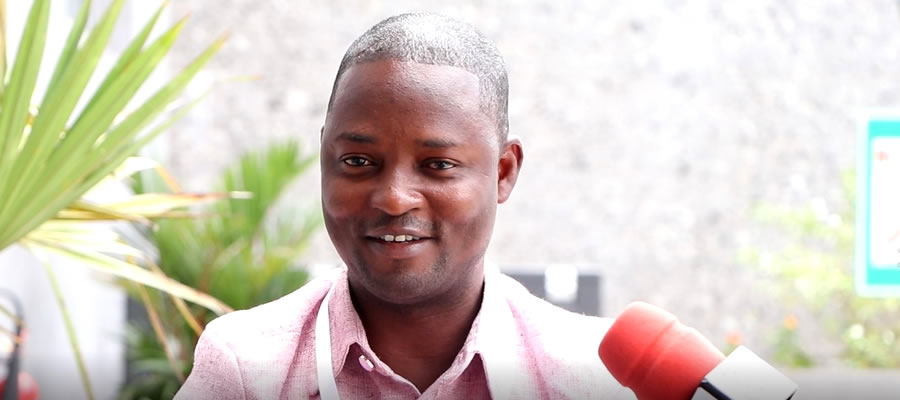

Main Source of Water for Drinking and Other Domestic Use
Main sources of drinking water
Water is important in human life and, therefore, its quality has some health implications on the population. Access to safe drinking water is part of the Millennium Development Goal (MDG) 7, target 10(World Bank, 2003). Figure 8.2 provides information on the main sources of drinking water for households in the Ekumfi District. The river/stream is the main source of drinking water as it serves 26.6 percent of all households in the District. It is followed by bore-hole/pump/tube well (22.8%), public tap/stand pipe (15.3%) while protected spring and bottled water constitutes 0.1 percent of the sources of drinking water in the District. About 75.0 percent of households in the urban localities rely on bore-hole/pump/tube well as their main source of drinking water compared to 22.8 percent of the rural households.
Main source of water for other domestic purposes
The main source of water for other domestic purposes in the District is river/stream (27.7%). The next commonly used source of water is borehole/pump/tube well (26.8%) while protected spring water (0.1%) is the least used water domestically (Table 8.10). It is also to be noted that a higher proportion of rural households than the urban households use unsafe sources of water for domestic purposes. This may practice could expose people to all kinds of water-borne diseases.
Bathing and Toilet Facilities
Toilet facilities
The nature of toilet and bathing facilities used by people could have some implications on their health. Figure 8.3 indicates that public toilet (WC, KVIP, Pit, Pan, etc.) is the main toilet facility (40.4%) used by households in the District. The proportion of households in the District that has no toilet facility (Bush/Beach/Field) is quite high (54.8% in the urban and 28.3% in the rural areas). The use of public toilet is relatively more common in the rural areas (41.6%) than in urban localities (28.3%). The use of WC is not widespread among households in the District. Just about two percent of the households use WC (2.1% and 2.8% respectively in rural and urban areas). Households should be educated to construct their own toilet facilities to reduce the health implications associated with the use of open air defecation which is widespread in the District.
Bathing facilities
Table 8.11 presents information on bathing and toilet facilities used in the Ekumfi District. Own bathroom for exclusive use constitutes 22.9 percent, shared open cubicle accounts for 22.0 percent, about 20 percent uses shared separate bathroom in the same house while 11.5 percent of households use open space around the house. Shared open cubicle (37.5%) is the main bathing facility in the urban areas while own bathroom for exclusive use (23.3%) is the most commonly used in the rural areas. Given the poor attitude towards the maintenance of shared facilities in Ghana, households in the District should be encouraged to build their own bathing facilities.
Method of Waste Disposal
Method of solid waste disposal
To achieve the Millennium Development Goal (MDG) 7, target 10 (halve by 2015 the proportion of people without sustainable access to safe drinking water and basic sanitation (World Bank, 2003), there is the need to ensure proper waste disposal. Table 8.12 shows that 77.2 percent of households in the District use public dump (open space) as their main method of waste disposal, 11.3 percent of them burn their waste, 4.1 percent dumps them indiscriminately while 1.5 percent of households have their solid waste collected for disposal.
The low proportion (2.9%) of households disposing solid waste into public dump (container) as against public dump (open space) (77.2%) is an indication that either public refuse containers are not available to households or households in the District refuse to use that facility. Interestingly, the proportion of households having their solid waste collected in the rural localities is relatively higher (1.6%) than that of urban households (0.5%). This means that solid waste collection is more effective in rural than urban areas in the District. There is the need to ensure proper waste disposal (using refuse containers provided) and effective waste collection in the District.
Method of liquid waste disposal
The main method of liquid waste disposal is by throwing onto compound (54.2%), followed by being thrown onto the street/outside (37.3%) while the use of the sewage system (0.3%) is almost non-existent in the District (Table 8.12).While a higher proportion of urban households throw their liquid waste into the gutter (9.5%) than their rural counterparts (3.9%), the use of the drainage into a pit (soak away) is higher in rural (1.5%) than urban areas. The proper methods of disposing liquid waste such as through the sewage system, drainage system into a gutter and drainage into a pit (3.7%) are not common practices in the District. The need for proper disposal of liquid waste in the Ekumfi District is long overdue.
Date Created : 11/17/2017 3:58:45 AM








 facebook
facebook
 twitter
twitter
 Youtube
Youtube
 +233 593 831 280
+233 593 831 280 0800 430 430
0800 430 430 GPS: GE-231-4383
GPS: GE-231-4383 info@ghanadistricts.com
info@ghanadistricts.com Box GP1044, Accra, Ghana
Box GP1044, Accra, Ghana